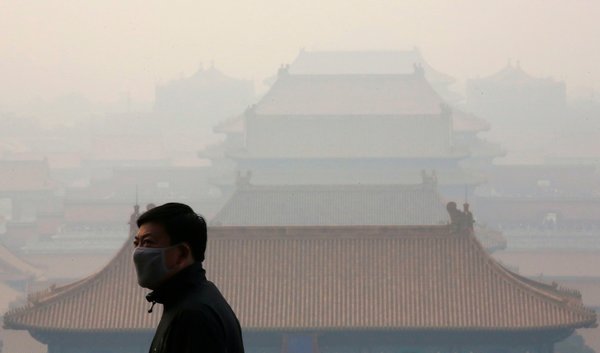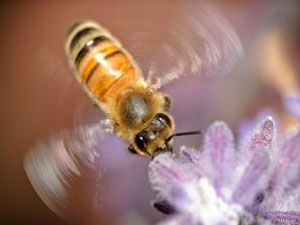《Nature》目录要览:2010-09-23出版
时间:2010-09-23 阅读: 我要评论:
《Nature》目录要览:2010-09-23出版
封面故事:镰刀形疟原虫的演化起源
感染人类的疟疾寄生虫中最流行、最致命的镰刀形疟原虫的演化起源有很大争议。现在,对来自活的野生非洲猿的数千粪便样品所做的遗传分析表明,西部大猩猩(而不是黑猩猩或倭黑猩猩)身上的寄生虫与人类身上的寄生虫关系最近。这些数据还表明,这种寄生虫的所有感染人的现存种系都来自同一宿主转移事件。这些新的发现对于当前的抗疟疾工作也有意义,因为它们可以为寻找镰刀形疟原虫的潜在猿载体库提供一个线索。(Articles p.420)
1970年代海洋温度降低之谜
全球平均气温在20世纪并不是连续上升的。相反,它们从20世纪初到1940年代是上升的,在该世纪中期稍有下降,从1970年代中期到2000年代又快速上升。世纪中期的
变冷一般被解释为对硫酸盐气溶胶的生成量的一个高峰和/或自然气候振荡做出的反应。现在,David Thompson及其同事发现,1970年前后海洋表面温度所发生的一个突变可以解释北半球变冷的相当大一部分。这篇论文的同一批作者以前还识别出以 1945年为中心的海洋表面温度(SST)测量结果中有一个异常(go.nature.com/16G48A),这个异常被发现是数据收集方法所发生的变化造成的一个人为现象。那个发现正在导致对近年来获得的全球平均气温时间系列进行一些最大的修正。1970年代中新发现的变化背后的物理机制仍不确定,但这种变化太快,不会是由气溶胶或多年代之间的变化造成的。(Letters to Nature p.444)
断层动态变弱的实验证据
Ze'ev Reches 和 David Lockner为以接近地震滑动速度剪切的断层的动态变弱提供了实验证据。他们的实验断层(有固体花岗岩块组成)很快侵蚀形成一种细粒岩石粉末,称之为 “断层泥”,它使断层强度降低二到三倍。在滑动停止后,“断层泥”很快“老化”,断层在几个小时到几天时间内恢复其强度。他们于是得出这样的结
论:只有新形成的“断层泥”才能使实验断层变弱。(Letters to Nature p.452)
与1-型糖尿病相关的基因网络
全基因组关联研究(GWASs)表明,若干基因与1-型糖尿病(T1D)和其他常见疾病相关,但在多数情况下,DNA变化影响疾病风险的机制还远不清楚。现在,在大鼠基因组研究方面的最新进展使得系统性遗传研究方法成为可能,它应可帮助揭示疾病与基因功能之间的联系。利用跨越七种不同类型大鼠组织的基因表达研究结果,结合GWASs 和人类遗传学方法,Heinig等人现在识别出,由“干扰素调控因子-7” (IRF7)驱动的炎症网络是1-型糖尿病的一个贡献因子。他们还将先天病毒响应通道和巨噬细胞牵涉进了疾病的病因学中。这项研究表明了一个问题,即跨越不同物种的共同表达网络何以能提供基因的功能注解,这些注解可被用来揭示GWASs没有检测到的、影响较小的常见遗传变异的信号.(Letters to Nature p.460)
小RNA是怎样运动的?
RNA 干涉 (RNAi)的基因沉默功能是一种基因调控机制,涉及被称为微RNA(miRNA)的、核苷酸数量在21至24之间的RNA以及小干涉 RNA(siRNA)。这种功能在植物和动物中都可以从细胞到细胞传播。使得这种通信方式成为可能的移动沉默信号的身份仍然不清楚。Daniel Chitwood 和Marja Timmermans对最近的相关研究进行了综述,这些研究为了解植物中这种信号的身份提供了线索。他们得出结论认为,虽然植物中几乎每个已知RNAi通道都能够在细胞间移动——其中一些至少能通过微管来移动,但这种移动信号的精确身份尚未确定。小RNA双链结构是这种作用的一个优先候选对象,但单链小 RNA在某些情况下似乎也有移动性。尚未解决的其他问题还包括:RNA在运输过程中是与蛋白相结合的还是自由的,以及这种运动是通过被动扩散进行的还是一个主动过程。(Review Article p.415)
连四硫酸盐呼吸在沙门氏菌肠道感染中的作用
肠道血清型鼠伤寒沙门氏菌(Salmonella enterica serotype Typhimurium)能够利用连四硫酸盐作为末端电子受体的性质,多年来在实验室中一直被用作利用这种细菌来富集生长媒介的一种便利手段。连四硫酸盐呼吸过去被认为在感染过程中几乎没有什么重要性, 而是当生长在含有连四硫酸盐的环境中(如土壤或正在分解的尸体)的
自生细菌中时,也许才显示其重要性。现在,这种代谢在小肠感染过程中可能起的一个作用已被发现。由鼠伤寒沙门氏菌毒性因子诱导的急性肠炎,被发现伴随着肠
道中氧自由基的产生,它是免疫反应的一部分。这些氧自由基氧化硫代硫酸盐(它是肠上皮细胞硫化氢解毒反应的最终产物),生成连四硫酸盐。然后,该病原体在
发炎的小肠中的生长过程中利用连四硫酸盐的呼吸作用,使其能够在竞争中战胜依赖于厌氧发酵的其他微生物。(Articles p.426 )
Mediator 和Cohesin在控制干细胞状态中的作用
胚胎干细胞状态的控制尚未被完全了解,但这种知识是
了解人类发育的基础,也是再生医学取得进步的基础。
使得干细胞具有多能性的基因表达程序由转录因子
(如 Oct4、 Sox2和 Nanog)控制,这种控制在一个被认为
涉及基因激发的过程中进行,而基因激发是通过在与增
强子结合的转录因子和位于核心启动子上的转录器之间
形成DNA 环来实现的。在这里,两个因子(Mediator 和
Cohesin)被发现将胚胎干细胞中的活动基因的增强子和
核心启动子连接在一起,它们通过产生与每个细胞的基
因表达程序相联系的细胞类型特异性DNA 环来实现这种
连接。这些结果表明,由Mediator 和Cohesin中的突变引起
的疾病(包括Opitz–Kaveggia综合症、Lujan综合症、精神分
裂症和Cornelia de Lange综合症),与由这些蛋白复合物所
建立的细胞类型特异性染色质结构中的缺陷相关。
(Articles p.430 )
纳米级的计算断层摄影方法
成熟的X-射线断层摄影方法能够显示整个生物和单个细
胞的三维内部结构以及定量信息,这些信息通常是根据
X-射线衰减数据计算的。现在,一种新型的X-射线计算
断层摄影方法正在将定量X-射线成像方法带进纳米世
界。该方法利用“ptychographic” X-射线成像,它能够从
即便是很弱的吸收目标来提取详细的相对比(phase
contrast)信息。这种新方法能够探测出不到1%的密度变
化,其潜力已通过生成一个骨头样本的3D图像得到演
示,在这些图像中,尺度为100纳米长度的结构,如骨细
胞空隙和互联小管网络,都能清晰分辨出来。这种类型
的高分辨率定量断层摄影方法在生物医学、化石的显微
分析以及材料科学中都可能派上用场。
(Letters to Nature p.436)
视觉中超快光化学反应的实验观测
视觉中的主要光化学事件,即视紫质中“11-顺发色
团”向“全反式”形式的异构化,是已知最快的自然光
化学过程之一,不到1秒的百万分之一的百万分之一
(即10的负13次方)。如此快的反应以前是实验人员无
法接触的,但现在Polli等人报告,它们利用超快光谱学
方法对这一反应进行了定性,所用方法达到 “sub-20-飞
秒”的时间分辨率和从可见光到近红外的光谱覆盖。视
紫质的极端反应性被认为源自一个“分子漏斗”机制,
它是该分子的基态和激发态的势能 “能面”之间的一
种锥形交叉。新的光谱数据证实,锥形交叉是启动视力
的反应的基础。
(Letters to Nature p.440)
----------------------
NEWS & VIEWS
----------------------
Malaria: The gorilla connection pp404-405
Plasmodium falciparum is the agent of the deadliest form of human
malaria. A survey of Plasmodium diversity in African apes reveals that
western gorillas are the reservoir species for this parasite. See
Article p. 420
Edward C. Holmes
doi:10.1038/467404a
http://www.nature.com/nature/journal/v467/n7314/full/467404a.html
Extrasolar planets: More giants in focus pp405-406
A fresh analysis of data from gravitational microlensing surveys for
planets orbiting stars other than the Sun finds that gas-giant planets
similar to Jupiter are more common than previously thought.
John Chambers
doi:10.1038/467405a
http://www.nature.com/nature/journal/v467/n7314/full/467405a.html
Gene expression: The coherent Mediator pp406-407
Enhancer sequences increase gene transcription with the help of a co-
activator complex, the Mediator. Another protein complex [mdash]
cohesin [mdash] seems to work with Mediator to bring together
enhancers and promoters. See Article p. 430
Rolf Ohlsson
doi:10.1038/467406a
http://www.nature.com/nature/journal/v467/n7314/full/467406a.html
Biological imaging: Beyond fluorescence pp407-408
Nanoparticles that generate light through a mechanism known as second
harmonic generation have been used to image live tissue. The particles
overcome many problems associated with fluorescent probes for
bioimaging.
Bruce E. Cohen
doi:10.1038/467407a
http://www.nature.com/nature/journal/v467/n7314/full/467407a.html
Microscopy: A new phase for X-ray imaging pp409-410
A fine marriage between two approaches to X-ray microscopy [mdash]
computed tomography and ptychographic imaging [mdash] delivers high-
resolution, three-dimensional images of samples without the need for
lenses. See Letter p. 436
Henry N. Chapman
doi:10.1038/467409a
http://www.nature.com/nature/journal/v467/n7314/full/467409a.html
Host-microbe interaction: Inflammation for growth pp410-411
How does a Salmonella pathogen outcompete beneficial intestinal
microorganisms? It triggers an immune response that generates a
compound from intestinal gas that it can utilize as an energy source.
See Article p. 426
Samuel I. Miller
doi:10.1038/467410a
http://www.nature.com/nature/journal/v467/n7314/full/467410a.html
Complex systems: Foreseeing tipping points pp411-412
Theory suggests that the risk of critical transitions in complex
systems can be revealed by generic indicators. A lab study of
extinction in plankton populations provides experimental support for
that principle. See Letter p. 456
Marten Scheffer
doi:10.1038/467411a
http://www.nature.com/nature/journal/v467/n7314/full/467411a.html
Physical chemistry: Seaming is believing pp412-413
Do excited molecules relaxing to their ground state pass through a
'seam' connecting the potential energy profiles of the states?
Experimental data suggest the answer to this long-standing question is
'yes'. See Letter p. 440
Todd J. Martinez
doi:10.1038/467412a
http://www.nature.com/nature/journal/v467/n7314/full/467412a.html
----------------------
REVIEW
----------------------
Small RNAs are on the move pp415-419
Daniel H. Chitwood and Marja C. P. Timmermans
doi:10.1038/nature09351
Abstract: http://www.nature.com/nature/journal/v467/n7314/abs/nature09351.html
Article: http://www.nature.com/nature/journal/v467/n7314/full/nature09351.html
----------------------
ARTICLES
----------------------
Origin of the human malaria parasite Plasmodium falciparum in gorillas
pp420-425
The evolutionary origin of the human malaria parasite Plasmodium
falciparum has been much debated. Genetic analysis of a large number
of faecal samples from wild-living African apes now shows that
Plasmodium parasites from Western gorillas are most closely related to
the human parasite. The data suggest that human P. falciparum evolved
from a gorilla parasite after a single host transfer event.
Weimin Liu et al.
doi:10.1038/nature09442
Abstract: http://www.nature.com/nature/journal/v467/n7314/abs/nature09442.html
Article: http://www.nature.com/nature/journal/v467/n7314/full/nature09442.html
Gut inflammation provides a respiratory electron acceptor for
Salmonella pp426-429
Salmonella enterica serotype Typhimurium causes acute gut
inflammation, which promotes the growth of the pathogen through
unknown mechanisms. It is now shown that the reactive oxygen species
generated during inflammation react with host-derived sulphur
compounds to produce tetrathionate, which the pathogen uses as a
terminal electron acceptor to support its growth. The ability to use
tetrathionate provides the pathogen with a competitive advantage over
bacteria that lack this property.
Sebastian E. Winter et al.
doi:10.1038/nature09415
Abstract: http://www.nature.com/nature/journal/v467/n7314/abs/nature09415.html
Article: http://www.nature.com/nature/journal/v467/n7314/full/nature09415.html
Mediator and cohesin connect gene expression and chromatin
architecture pp430-435
Gene activation may involve the formation of a DNA loop that connects
enhancer-bound transcription factors with the transcription apparatus
at the core promoter. But this process is not well understood. Here,
two proteins, mediator and cohesin, are shown to connect the enhancers
and core promoters of active genes in embryonic stem cells. These
proteins seem to generate cell-type-specific DNA loops linked to the
gene expression program of each cell.
Michael H. Kagey et al.
doi:10.1038/nature09380
Abstract: http://www.nature.com/nature/journal/v467/n7314/abs/nature09380.html
Article: http://www.nature.com/nature/journal/v467/n7314/full/nature09380.html
----------------------
LETTERS
----------------------
Ptychographic X-ray computed tomography at the nanoscale pp436-439
Ptychographic X-ray imaging is a powerful technique for extracting
detailed phase (and hence structural) information from weakly
absorbing objects. Here it is shown how this technique can be combined
with methods for tomographic reconstruction to generate full three-
dimensional maps of the object under investigation. The approach has
sensitivity to density variations of less than one per cent, and can
resolve structures on the 100 nm length scale.
Martin Dierolf et al.
doi:10.1038/nature09419
Abstract: http://www.nature.com/nature/journal/v467/n7314/abs/nature09419.html
Article: http://www.nature.com/nature/journal/v467/n7314/full/nature09419.html
Conical intersection dynamics of the primary photoisomerization event
in vision pp440-443
Chemical reactions are usually described in terms of the movement of
nuclei between the potential energy surfaces of ground and excited
electronic states. Crossings known as conical intersections permit
efficient transitions between the surfaces. It is shown here that
ultrafast optical spectroscopy, with sub-20-fs time resolution and
spectral coverage from the visible to the near-infrared, can map the
isomerization of rhodopsin with sufficient resolution to shown that a
conical intersection is important in this crucial event in vision.
Dario Polli et al.
doi:10.1038/nature09346
Abstract: http://www.nature.com/nature/journal/v467/n7314/abs/nature09346.html
Article: http://www.nature.com/nature/journal/v467/n7314/full/nature09346.html
An abrupt drop in Northern Hemisphere sea surface temperature around
1970 pp444-447
Global-mean surface temperatures have risen, fallen and risen again
during the twentieth century, with some differences between the
Northern and Southern hemispheres. The cooling is usually thought to
be due to a peak in sulphate aerosol production or to changes in the
climate of the world's oceans that arise over decades. Here it is
shown that an abrupt change in sea surface temperatures accounts for
much of the Northern Hemisphere cooling. The event was too rapid to
have been caused by aerosols or multidecadal variability.
David W. J. Thompson, John M. Wallace, John J. Kennedy and Phil D. Jones
doi:10.1038/nature09394
Abstract: http://www.nature.com/nature/journal/v467/n7314/abs/nature09394.html
Article: http://www.nature.com/nature/journal/v467/n7314/full/nature09394.html
Water and its influence on the lithosphere-asthenosphere boundary
pp448-451
What defines the boundary between the Earth's lithosphere and
asthenosphere? Here it is shown experimentally that the instability of
the hydrous mineral pargasite at depths greater than about 90 km
causes a sharp drop in the water-storage capacity of a fertile upper-
mantle mineralogy, and accordingly a sharp drop in its solidus
temperate. This effect might define the lithosphere-asthenosphere
boundary.
David H. Green, William O. Hibberson, Istvan Kovacs and Anja Rosenthal
doi:10.1038/nature09369
Abstract: http://www.nature.com/nature/journal/v467/n7314/abs/nature09369.html
Article: http://www.nature.com/nature/journal/v467/n7314/full/nature09369.html
Fault weakening and earthquake instability by powder lubrication
pp452-455
Earthquake instability has long been attributed to fault weakening
during accelerated slip, but what are the mechanisms that control this
weakening? Here laboratory evidence is presented for the dynamic
weakening of faults that are sheared at velocities approaching
earthquake slip rates. The experimental faults, made from solid
granite blocks, quickly wore to form a fine-grain rock powder, known
as gouge, which reduced the faults' strength. It is concluded that
only newly formed gouge can weaken the experimental faults.
Ze/'ev Reches and David A. Lockner
doi:10.1038/nature09348
Abstract: http://www.nature.com/nature/journal/v467/n7314/abs/nature09348.html
Article: http://www.nature.com/nature/journal/v467/n7314/full/nature09348.html
Early warning signals of extinction in deteriorating environments
pp456-459
Populations that become extinct because of environmental degradation
pass a tipping point, after which extinction is inevitable. But theory
predicts that the population's dynamics indicate what is coming
beforehand, through the phenomenon of critical slowing down. It has
now been shown that critical slowing down can be used to anticipate
extinction in experimental populations of Daphnia magna.
John M. Drake and Blaine D. Griffen
doi:10.1038/nature09389
Abstract: http://www.nature.com/nature/journal/v467/n7314/abs/nature09389.html
Article: http://www.nature.com/nature/journal/v467/n7314/full/nature09389.html
A trans-acting locus regulates an anti-viral expression network and
type 1 diabetes risk pp460-464
Here, a combination of genetic studies of gene expression, cross-
species network analysis and genome-wide association studies has been
used to identify gene networks and the loci underlying their
regulation in rats. The results show that an inflammatory network
driven by interferon regulatory factor 7 contributes to susceptibility
to type 1 diabetes, and implicate the innate viral-response pathway
and macrophages in the aetiology of this disease.
Matthias Heinig et al.
doi:10.1038/nature09386
Abstract: http://www.nature.com/nature/journal/v467/n7314/abs/nature09386.html
Article: http://www.nature.com/nature/journal/v467/n7314/full/nature09386.html
Oligomeric organization of the B-cell antigen receptor on resting
cells pp465-469
B cells are activated by many different antigens to produce
appropriate antibodies. B cells express up to 120,000 B-cell antigen
receptor (BCR) complexes on their surface, but how do these complexes
remain silent on resting B cells, and how are they activated? It is
found here that the BCR on resting cells forms oligomers, and that
these may be an autoinhibited form of the receptor. Disruption of the
oligomer shifts B cells towards activation.
Jianying Yang and Michael Reth
doi:10.1038/nature09357
Abstract: http://www.nature.com/nature/journal/v467/n7314/abs/nature09357.html
Article: http://www.nature.com/nature/journal/v467/n7314/full/nature09357.html
Role of a ribosome-associated E3 ubiquitin ligase in protein quality
control pp470-473
The translation of messenger RNA that lacks stop codons results in the
production of aberrant proteins, which may have harmful effects on the
cell. It is unclear how eukaryotic cells eliminate these 'non-stop'
proteins. Here it is shown that, in Saccharomyces cerevisiae, an E3
ubiquitin ligase called Ltn1 acts in the quality-control pathway. It
associates with ribosomes and marks non-stop proteins with ubiquitin,
which targets the proteins for degradation.
Mario H. Bengtson and Claudio A. P. Joazeiro
doi:10.1038/nature09371
Abstract: http://www.nature.com/nature/journal/v467/n7314/abs/nature09371.html
Article: http://www.nature.com/nature/journal/v467/n7314/full/nature09371.html
Checkpoint-dependent inhibition of DNA replication initiation by Sld3
and Dbf4 phosphorylation pp474-478
Two classes of enzyme [mdash] cyclin-dependent kinases (CDK) and Dbf4-
dependent kinase (DDK) [mdash] facilitate the initiation of DNA
replication in eukaryotes. It is now shown that, when DNA damage is
sensed, another kinase, Rad53, halts the firing of late replication
origins by inhibiting both the CDK and the DDK pathways. Rad53 acts on
DDK directly by inhibiting Dbf4, whereas the CDK pathway is blocked by
Rad53-mediated phosphorylation of the downstream CDK substrate Sld3.
Philip Zegerman and John F. X. Diffley
doi:10.1038/nature09373
Abstract: http://www.nature.com/nature/journal/v467/n7314/abs/nature09373.html
Article: http://www.nature.com/nature/journal/v467/n7314/full/nature09373.html
Damage-induced phosphorylation of Sld3 is important to block late
origin firing pp479-483
Two classes of enzyme [mdash] cyclin-dependent kinases (CDK) and Dbf4-
dependent kinase (DDK) [mdash] facilitate the initiation of DNA
replication in eukaryotes. It is now shown that, when DNA damage is
sensed, another kinase, Rad53, halts the firing of late replication
origins by inhibiting both the CDK and the DDK pathways. Rad53 acts on
DDK directly by inhibiting Dbf4, whereas the CDK pathway is blocked by
Rad53-mediated phosphorylation of the downstream CDK substrate Sld3.
Jaime Lopez-Mosqueda et al.
doi:10.1038/nature09377
Abstract: http://www.nature.com/nature/journal/v467/n7314/abs/nature09377.html
Article: http://www.nature.com/nature/journal/v467/n7314/full/nature09377.html
Crystal structures of the CusA efflux pump suggest methionine-mediated
metal transport pp484-488
Gram-negative bacteria, such as Escherichia coli, use tripartite
efflux complexes in the resistance-nodulation-cell division family to
expel toxic compounds from the cell. The CusCBA system is responsible
for removing biocidal Cu(I) and Ag(I) ions. Here, the X-ray crystal
structure is reported of CusA in the absence and presence of bound
Cu(I) or Ag(I). The structures reveal that the metal-binding sites are
located within the cleft region of the periplasmic domain. A potential
pathway for ion export is proposed.
Feng Long et al.
doi:10.1038/nature09395
Abstract: http://www.nature.com/nature/journal/v467/n7314/abs/nature09395.html
Article: http://www.nature.com/nature/journal/v467/n7314/full/nature09395.html
----------------------
FUTURES
----------------------
likeMe p494
A friend in need.
Keith Brooke
doi:10.1038/467494a
http://www.nature.com/nature/journal/v467/n7314/full/467494a.html
----------------------
Advance Online Publication
----------------------
22 September 2010
Crystal structure of the human symplekin-Ssu72-CTD phosphopeptide
complex
Kehui Xiang et al.
doi:10.1038/nature09391
Abstract: http://www.nature.com/nature/journal/vaop/ncurrent/full/nature09391.html
Article: http://www.nature.com/nature/journal/vaop/ncurrent/full/nature09391.html
Structure of a cation-bound multidrug and toxic compound extrusion
transporter
Xiao He et al.
doi:10.1038/nature09408
Abstract: http://www.nature.com/nature/journal/vaop/ncurrent/full/nature09408.html
Article: http://www.nature.com/nature/journal/vaop/ncurrent/full/nature09408.html
The ploidy conveyor of mature hepatocytes as a source of genetic
variation
Andrew W. Duncan et al.
doi:10.1038/nature09414
Abstract: http://www.nature.com/nature/journal/vaop/ncurrent/full/nature09414.html
Article: http://www.nature.com/nature/journal/vaop/ncurrent/full/nature09414.html
19 September 2010
Anisotropies in cortical tension reveal the physical basis of
polarizing cortical flows
Mirjam Mayer et al.
doi:10.1038/nature09376
Abstract: http://www.nature.com/nature/journal/vaop/ncurrent/full/nature09376.html
Article: http://www.nature.com/nature/journal/vaop/ncurrent/full/nature09376.html
Laser cooling of a diatomic molecule
E. S. Shuman, J. F. Barry and D. DeMille
doi:10.1038/nature09443
Abstract: http://www.nature.com/nature/journal/vaop/ncurrent/full/nature09443.html
Article: http://www.nature.com/nature/journal/vaop/ncurrent/full/nature09443.html
Asterless is a scaffold for the onset of centriole assembly
Nikola S. Dzhindzhev et al.
doi:10.1038/nature09445
Abstract: http://www.nature.com/nature/journal/vaop/ncurrent/full/nature09445.html
Article: http://www.nature.com/nature/journal/vaop/ncurrent/full/nature09445.html
| 《Nature》目录要览 — 2011-04-28出版 |
| 《Nature》目录要览:2011-01-20出版 |
| 《Nature》目录要览:2010-12-23出版 |
| 《Nature》目录要览:2010-12-16出版 |
| 《Nature》目录要览:2010-12-09出版 |
| 《Nature》目录要览:2010-12-02出版 |
特别声明:本文转载仅仅是出于传播信息的需要,版权归原作者所有,并不意味着代表本网站观点或证实其内容的真实性; 如其他媒体、网站或个人从本网站转载使用,须保留本网站注明的“来源”,并自负版权等法律责任; 作者如果不希望被转载或者联系转载稿费等事宜,请与我们接洽:service#environmentor.cn(请将#改为@)。
来源:Nature 作者:Environmentor (环境人 Environmentor.Cn)





